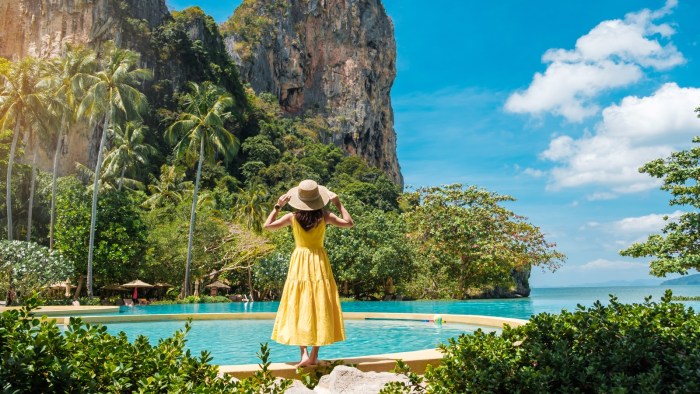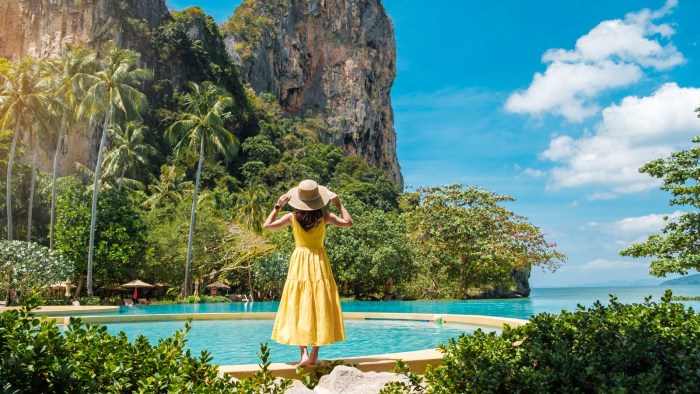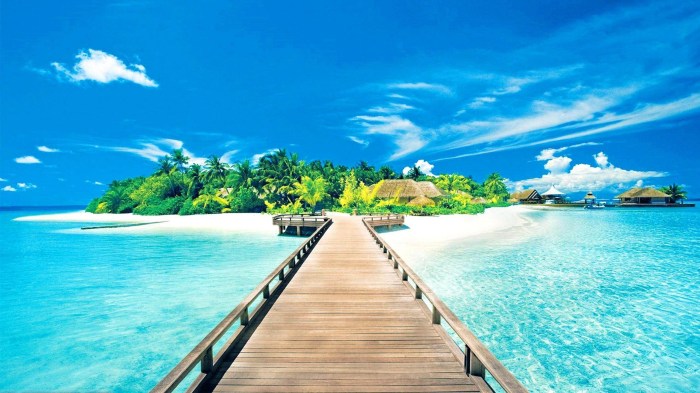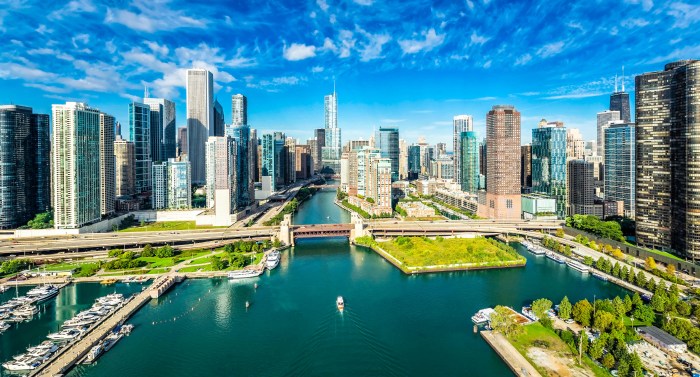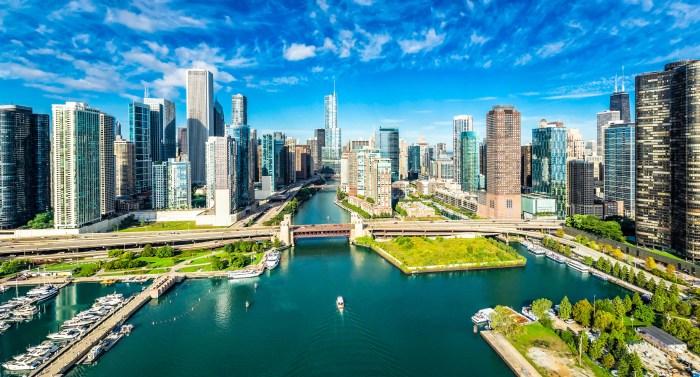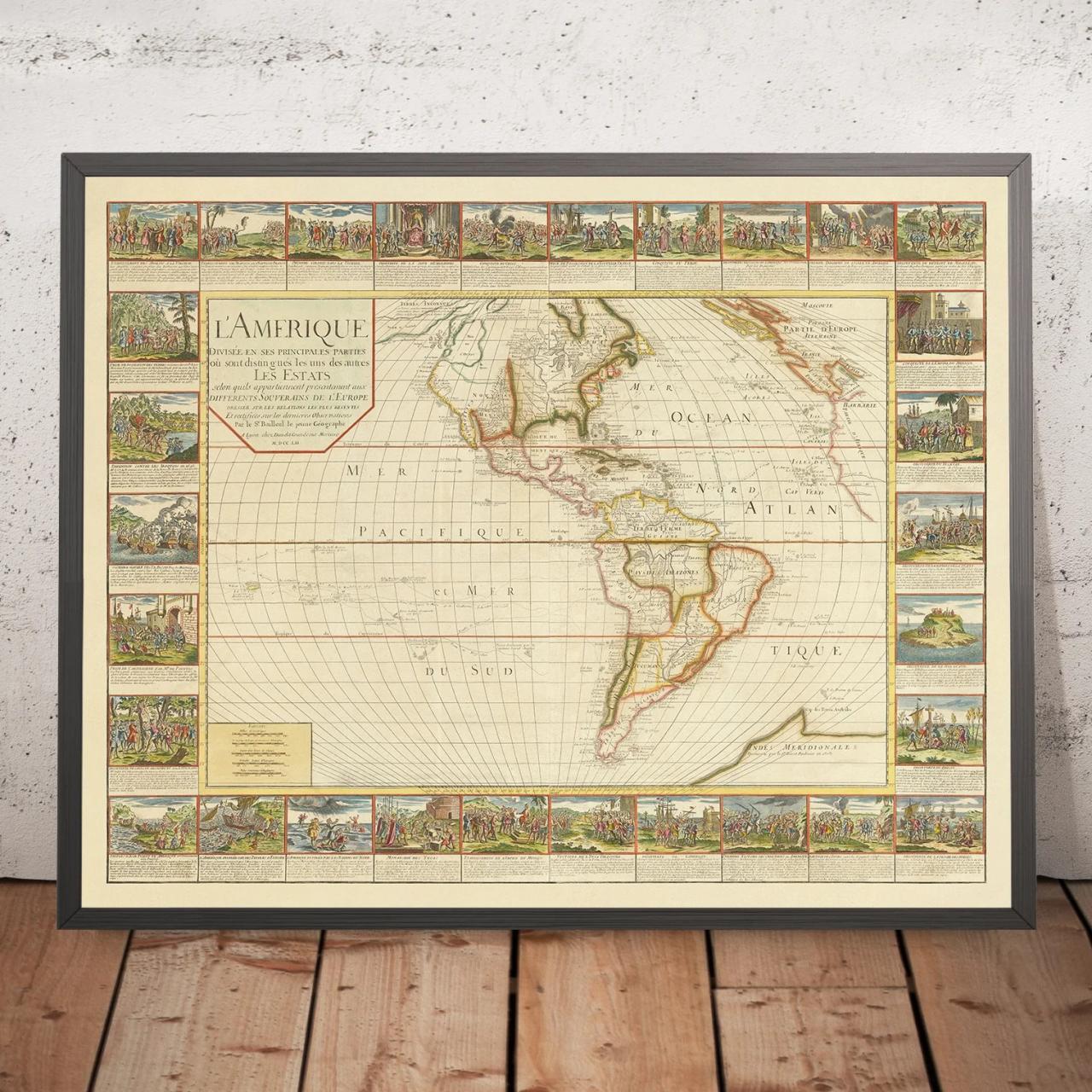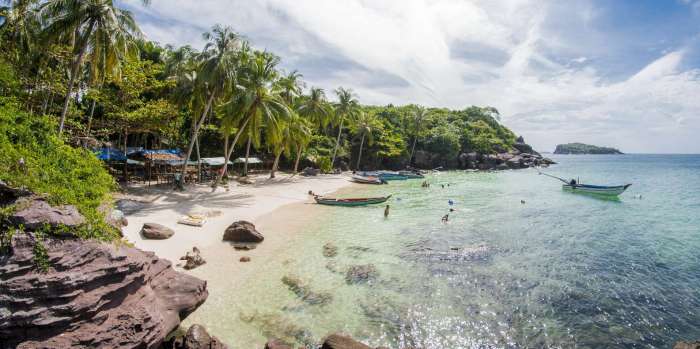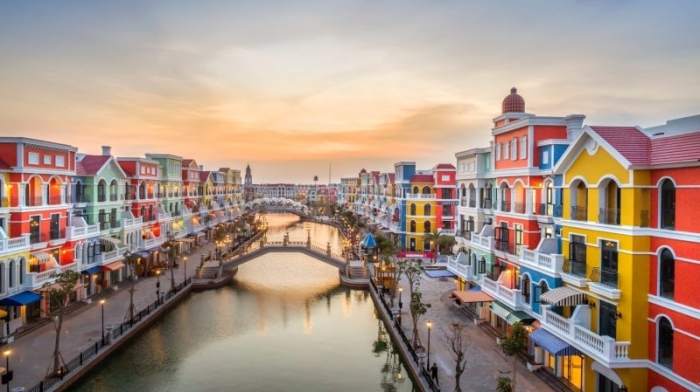Sardinia on a budget is achievable! This guide dives deep into making the most of your Sardinian adventure without breaking the bank. From affordable accommodation options to budget-friendly food and transportation strategies, we’ll explore how to experience the beauty and culture of Sardinia without emptying your wallet. Discover hidden gems and local experiences that won’t cost a fortune.
This comprehensive guide provides a practical roadmap for planning a budget-friendly Sardinian getaway. We’ll cover everything from finding affordable accommodations to navigating the local transportation system, uncovering cost-effective ways to savor delicious Sardinian cuisine, and discovering exciting, free or low-cost activities.
Accommodation Options on a Budget
Sardinia offers a wealth of affordable accommodation options for budget-conscious travelers, catering to diverse preferences and travel styles. From cozy hostels to self-catering apartments, the island provides opportunities to experience its charm without breaking the bank. This section explores various lodging choices, their pros and cons, and how to find them.Budget travel in Sardinia doesn’t mean sacrificing comfort or location.
With careful planning and research, you can find accommodations that perfectly suit your needs and provide a memorable Sardinian experience.
Hostel Stays
Hostels are a popular choice for budget travelers, offering a social atmosphere and shared facilities. They are typically located in or near city centers or tourist hubs, making them convenient for exploring local attractions. Hostels often provide communal kitchens, bathrooms, and sometimes even shared lounges. This social environment can be a great way to meet other travelers and make new friends.
However, some hostels may lack the privacy of a private room.
Guesthouses
Guesthouses are another affordable option, offering a more personal touch than hostels. These smaller, family-run establishments often provide comfortable rooms and personalized service. They can be located in both urban and rural areas, offering different experiences and perspectives on Sardinian life. The cost-effectiveness and location advantages often depend on the specific guesthouse and its proximity to attractions.
Airbnb
Airbnb presents a wide range of options, from private rooms to entire apartments. This allows for flexibility in terms of space, amenities, and location. The flexibility in choice often translates to personalized accommodations that might be harder to find in other options. However, the quality of Airbnb accommodations can vary, and some might not provide the same level of service as traditional hotels.
Finding a trustworthy and well-reviewed Airbnb is crucial for a positive experience.
Self-Catering Apartments
Self-catering apartments provide the ultimate freedom and flexibility. You can prepare your own meals, saving on food costs, and often have more space than other options. These apartments can be found in various locations, from coastal towns to mountainous areas, offering a diverse range of experiences. However, you’ll be responsible for cleaning and maintaining the apartment.
Accommodation Comparison Table
| Accommodation Type | Cost (estimated) | Amenities | Location Advantages |
|---|---|---|---|
| Hostel | €20-€40 per night | Communal kitchen, bathrooms, sometimes lounge | Often centrally located, near attractions |
| Guesthouse | €30-€60 per night | Comfortable rooms, personalized service | Varied locations, from city centers to rural areas |
| Airbnb | €40-€100+ per night | Private rooms or apartments, often kitchen | Wide range of locations, from city centers to rural areas, and diverse experiences |
| Self-Catering Apartment | €50-€150+ per night | Full kitchen, more space | Flexibility to prepare meals, often more space |
Finding Budget Accommodations
Online platforms like Booking.com, Airbnb, and Hostelworld are excellent resources for finding budget-friendly accommodations. Using filters and reading reviews can help narrow down your choices. Local travel agencies and tourist information centers can also provide valuable insights into local accommodations, and recommendations for hidden gems. Word-of-mouth from other travelers can also be a reliable source.
Food and Drink on a Budget
Sardinia’s culinary scene is a feast for the senses, but savoring it without breaking the bank is achievable. This guide highlights cost-effective ways to enjoy the local flavors, from bustling markets to home-cooked meals. We’ll explore local markets, street food, picnics, budget-friendly restaurants, and how to utilize local produce to create delicious and economical meals.Budget travel often involves careful choices, but it doesn’t mean sacrificing quality.
Exploring the local food scene allows you to connect with the culture and experience the heart of Sardinia without emptying your wallet. This approach ensures an enriching and affordable travel experience.
Local Markets and Street Food
Sardinian markets are vibrant hubs of local produce and culinary delights. Shopping at these markets is an excellent way to sample fresh, seasonal produce at reasonable prices. Many markets offer a wide array of seafood, fruits, vegetables, and regional cheeses. This is a great opportunity to interact with local vendors and discover unique culinary gems. Street food vendors also offer a quick and inexpensive way to taste local specialties like “pane carasau” sandwiches or regional pastries.
Budget-Friendly Restaurants and Cafes
Numerous cafes and restaurants cater to budget travelers. “Trattorias” are an excellent choice for traditional Sardinian cuisine, serving dishes made with fresh, local ingredients. Often, these establishments offer set menus or specials at affordable prices. Seek out family-run restaurants, often found in less touristy areas, for a more authentic experience.
Planning a Sardinian adventure without breaking the bank? It’s totally doable! Think about exploring Florence on a budget – you can find tons of tips and tricks for affordable eats and activities on this page: florence on a budget. Adapting those strategies will help you discover Sardinia’s hidden gems while staying within your travel budget.
Local markets, affordable accommodations, and delicious street food are key to making the most of your Sardinian trip without emptying your wallet.
Cooking Meals with Local Produce
Taking advantage of fresh, local produce is a cornerstone of affordable dining. Many grocery stores sell affordable ingredients for home-cooked meals. Learning to prepare simple Sardinian dishes using fresh vegetables, fruits, and seafood can be both satisfying and economical. For example, a simple pasta dish with local vegetables and herbs can be surprisingly affordable and flavorful.
Comparing Food Prices and Minimizing Costs
Food prices in Sardinia can vary based on location and type of establishment. For example, meals at tourist-heavy restaurants may be more expensive than those at local trattorias. Shopping at local markets and preparing some meals yourself can significantly reduce food costs. Consider picnics to minimize restaurant expenses.
Local Grocery Stores and Everyday Essentials
Local grocery stores offer a range of affordable everyday essentials, including pasta, rice, bread, and olive oil. These are excellent choices for stocking up on provisions to prepare simple, budget-friendly meals. Compare prices at different stores and look for deals or promotions.
Budget-Friendly Food Options
| Location | Meal Type | Food Option | Estimated Cost (Euro) |
|---|---|---|---|
| Local Markets | Breakfast | Fresh fruit, pastry | 5-10 |
| Local Markets | Lunch | Panino with local produce | 8-15 |
| Trattoria | Dinner | Set menu (2 courses) | 15-25 |
| Local Grocery Store | Dinner | Pasta with vegetables | 10-15 |
| Picnic | Lunch | Sandwiches, fruit, wine | 10-20 |
Note: Prices are approximate and can vary depending on the season and specific location.
Transportation Strategies
Sardinia’s beauty is best enjoyed at a pace that suits your budget. Exploring the island by various modes of transport allows you to tailor your adventures to your spending and preferences. From hopping on buses to chartering a bike, the key is understanding the options available and planning your journeys effectively.Efficient and affordable transportation is crucial for maximizing your Sardinia experience without breaking the bank.
Public transport, while sometimes less direct than private options, can be remarkably cost-effective and offer a unique insight into local life. Cycling is an excellent choice for those who enjoy the scenery and want a more active exploration, while ferries provide a scenic and sometimes necessary connection between islands and mainland points.
Public Buses
Sardinia’s bus network is a fundamental part of the island’s public transport system. Knowing how to utilize it efficiently can save you money and time. The buses connect major towns and cities, often providing a cost-effective alternative to taxis or private car rentals. Frequent services are often available, and routes are strategically placed to cover most tourist destinations.
Planning your journey in advance and checking schedules is essential to avoid delays.
Train Travel
Sardinia’s rail network is a more limited option compared to buses. However, trains are generally a faster and more comfortable alternative, especially for longer distances between cities. While not as extensive as buses, they can be an economical option for reaching significant points, like the capital, Cagliari, and other major cities.
Ferries
Ferries are a crucial component of transportation in Sardinia, particularly for island hopping and connecting with the mainland. They are a scenic option, offering views of the coastline and islands, but the cost can vary depending on the distance and time of year. Researching schedules and pricing is essential for making the most of this mode of transport.
Cycling
Cycling is a fantastic way to experience Sardinia’s landscapes at your own pace. The island boasts stunning coastal roads and inland trails, allowing you to soak in the scenery while enjoying physical activity. Rental options are readily available in many tourist hubs. Ensure you have the right gear, including a helmet and comfortable clothing, and be aware of potential traffic conditions.
Using Local Transportation Effectively
To make the most of public transport, it’s recommended to purchase a travel pass if you anticipate extensive use. This can significantly reduce the cost of individual journeys. Check the schedules and routes online or at local information centers to plan your trips effectively.
Comparison of Transportation Methods
| Transportation | Cost | Travel Time | Accessibility |
|---|---|---|---|
| Buses | Low | Variable | High |
| Trains | Medium | Faster | Medium |
| Ferries | Medium-High | Variable | High (island hopping) |
| Cycling | Low | Variable | High (for local areas) |
“Plan your routes in advance, and consider travel passes for cost-effectiveness.”
Reaching Tourist Destinations
Buses are ideal for getting to smaller towns and villages not easily reached by train. Ferries are essential for visiting the islands like La Maddalena Archipelago. Cycling is an excellent option for exploring the scenic coastal routes around your accommodation.
Maximizing Travel Time and Minimizing Costs
Consider combining different transport methods. For instance, take a train to a city, then use buses to explore surrounding areas. This strategy maximizes your time and minimizes costs. Travel during the off-season for potential discounts on ferries and other transport options.
Activities and Experiences
Sardinia’s beauty extends beyond its stunning beaches and crystal-clear waters. The island boasts a rich cultural heritage and diverse landscapes, perfect for exploration. This section focuses on affordable ways to experience Sardinia’s vibrant culture and natural wonders, ensuring your trip is both memorable and budget-friendly.Discovering Sardinia on a budget involves embracing the island’s authentic spirit. Many of the most captivating experiences don’t require expensive tickets or guided tours.
Local festivals, hiking trails, and free museums offer incredible opportunities to connect with the local culture and immerse yourself in the island’s unique character.
Exploring Free and Inexpensive Museums
Numerous museums in Sardinia offer free or discounted admission, providing insights into the island’s history, art, and culture. Many smaller local museums often feature collections that focus on specific crafts, historical periods, or natural history, offering a unique perspective. For example, the Museo Etnografico in Nuoro showcases the island’s traditional crafts and daily life, while some archeological sites may offer reduced entry fees during specific times.
Attending Local Festivals
Sardinian festivals are a vibrant part of the island’s cultural life, often celebrating local traditions, music, and food. Many of these events are free or have very affordable admission fees. Researching local calendars for festivals can help you uncover these hidden gems. Festivals can be a wonderful way to interact with locals, experience local cuisine, and soak in the lively atmosphere.
For example, the Festa di Sant’Efisio in Oristano is a significant local celebration.
Hiking and Nature Exploration
Sardinia offers stunning hiking trails through diverse landscapes, from coastal paths to mountainous regions. Hiking is a fantastic way to immerse yourself in the beauty of Sardinia’s nature. Many hiking trails are accessible and free to use, offering opportunities to discover hidden coves, secluded beaches, and breathtaking panoramic views. The paths often provide unique insights into the local flora and fauna.
For example, the trails around the Supramonte region are well-maintained and allow for a varied experience.
Discovering Hidden Gems and Local Experiences
Venture beyond the well-trodden tourist paths to uncover hidden gems and local experiences. Talk to locals, ask for recommendations, and explore less-visited areas. Local markets are great places to find fresh produce, local crafts, and unique souvenirs at affordable prices. Participating in local cooking classes or wine tasting sessions can also be budget-friendly ways to immerse yourself in Sardinian culture and cuisine.
Free and Low-Cost Activities by Region
- North Sardinia: Explore the charming villages of the Gallura region, hike along the stunning coastal paths, and visit the archaeological sites. Numerous beaches offer free access for sunbathing and swimming.
- Central Sardinia: Visit the Nuragic sites, hike in the Supramonte mountains, and explore the picturesque villages nestled within the hills. Local markets often offer opportunities to sample local products.
- South Sardinia: Discover the beaches of Villasimius and explore the unique landscapes of the area. Many smaller villages host local events that are free or low-cost to attend.
Table of Free and Low-Cost Activities
| Region | Activity | Location |
|---|---|---|
| North Sardinia | Coastal Hiking | Gallura region |
| Central Sardinia | Nuragic Site Visits | Various locations |
| South Sardinia | Beach Exploration | Villasimius area |
| Central Sardinia | Local Festivals | Various villages |
Tips for Saving Money: Sardinia On A Budget

Sardinia’s beauty comes at a price, but a well-planned budget can unlock your dream trip. This section dives into strategic money-saving techniques to ensure your Sardinian adventure doesn’t drain your savings. We’ll explore various facets, from savvy flight and ferry booking to mindful packing and effective travel credit card usage.
Flight and Ferry Savings Strategies
Booking flights and ferries in advance is crucial for securing the best deals. Airlines and ferry companies often offer discounts for early bookings, especially during the shoulder seasons (spring and fall). Flexibility with travel dates and times can yield significant savings. Consider flying into smaller airports or ports that might have lower ticket prices, and then using local transport to reach your final destination.
Comparing prices across different booking platforms, such as Kayak, Skyscanner, or specialized ferry booking websites, is essential to identify the most competitive rates.
Planning a Sardinian adventure without breaking the bank? It’s totally doable! Checking out Lonely Planet’s people travel plans, like their budget-friendly itineraries, can give you some seriously inspiring ideas. For example, their tips on finding affordable accommodation and local eateries in Sardinia could really help you make the most of your trip on a shoestring. Once you’ve got those ideas, you can tailor them to your own style and preferences to create a perfect Sardinian getaway on a budget.
lonely planet people travel plans will surely spark some amazing ideas!
Avoiding Hidden Costs
Hidden costs can significantly impact your budget. Be wary of airport or ferry terminal fees, baggage surcharges, and mandatory insurance policies. Thoroughly review all terms and conditions before booking, and factor in potential extra expenses like airport transfers or transportation to your accommodation. Checking for hidden fees is vital to preventing unexpected expenses.
Packing Tips for Reduced Baggage Fees
Optimizing your luggage can prevent costly baggage fees. Pack light, bringing only essential items. Utilize packing cubes or compression bags to maximize space and reduce the volume of your luggage. Consider clothing items that can be layered or used in multiple ways. Always check airline and ferry company baggage allowance policies to avoid exceeding the permitted weight or dimensions.
Knowing your limits can prevent financial shocks.
Managing Travel Expenses and Budget Adherence
Establishing a detailed travel budget for Sardinia is essential to manage expenses effectively. Allocate a specific amount for flights, accommodation, food, activities, and miscellaneous costs. Using a budgeting app or spreadsheet to track expenses daily can help you stay on track and identify areas where you might be overspending. Sticking to your budget requires discipline and mindful spending decisions.
Avoid impulse purchases and prioritize activities aligned with your budget.
Effective Travel Credit Card Use, Sardinia on a budget
Travel credit cards often offer valuable benefits, including rewards points, travel insurance, and airport lounge access. However, responsible use is critical. Calculate the potential rewards you might gain versus the interest charges if you can’t pay off the balance promptly. Prioritize using cards with rewards programs that align with your travel plans. Be diligent in tracking spending and adhering to repayment schedules.
Creating a Detailed Travel Budget for Sardinia
A detailed budget should itemize all anticipated expenses. Include costs for flights, accommodation, food, transportation, activities, and personal spending. Research average prices for these items in Sardinia, considering the time of year and your chosen activities. Allocate a specific amount for each category. Consider creating a contingency fund for unforeseen circumstances, like unexpected medical expenses or lost luggage.
Planning a Sardinian adventure on a budget? It’s totally doable! Avoiding the tourist traps and opting for local experiences can make a huge difference, similar to how avoiding the crowds in popular destinations like Hallstatt, which is now facing over-tourism issues, can help. Check out this article on Hallstatt over tourism frozen to see how others are navigating those challenges.
You can find fantastic deals on accommodations and food, and create an amazing Sardinian adventure without breaking the bank.
This will offer peace of mind during your trip.
| Category | Estimated Cost | Justification |
|---|---|---|
| Flights | €300 | Round-trip tickets from [Origin City] to [Sardinian Airport] |
| Accommodation | €500 | 7 nights in a [Type of Accommodation] in [City/Region] |
| Food & Drink | €200 | Daily meals, snacks, and drinks |
| Activities | €150 | Entrance fees, tours, and excursions |
| Transportation | €100 | Local transport, taxis, and ferries within Sardinia |
| Contingency | €100 | Unexpected expenses |
| Total | €1350 | Estimated total budget |
Sardinian Culture on a Budget
Immerse yourself in the rich tapestry of Sardinian culture without breaking the bank. Sardinia boasts a vibrant heritage, from age-old traditions to lively festivals, all waiting to be explored. This section provides practical strategies for experiencing the heart of Sardinia without emptying your wallet.Discovering Sardinian culture on a budget is achievable through careful planning and an open mind.
It’s about prioritizing experiences over material possessions, engaging with locals, and seeking out opportunities that don’t involve hefty price tags. You can discover the soul of Sardinia through its people and traditions without extravagant spending.
Experiencing Festivals and Events
Sardinian culture thrives through its vibrant festivals and celebrations. Many of these events offer fantastic opportunities for cultural immersion without substantial costs. Attending these celebrations provides insights into local customs, music, and traditions.
- Many festivals and events take place throughout the year, particularly during summer and fall. Check local tourist information centers or online resources for schedules and details. Some celebrations include local music performances, folk dances, or traditional food markets, providing opportunities for interaction and cultural exchange.
- Local markets and fairs often feature local artisans and craftspeople. These markets frequently offer a chance to purchase unique items at reasonable prices. It is a direct interaction with local culture and traditions, allowing for the purchase of unique and meaningful souvenirs.
Interacting with Locals
Building connections with locals is a vital part of experiencing any culture. In Sardinia, genuine interactions offer deeper insights into the traditions and daily lives of the people. This approach can be enriching and budget-friendly.
- Engage in casual conversations with shopkeepers, restaurant owners, or fellow travelers. This approach often reveals valuable local insights and anecdotes.
- Attend local events and gatherings, such as village celebrations or communal feasts, where interactions with locals are more common and less formal.
- Volunteer at a local project or assist with a local event. This is a great way to directly experience the community and contribute to the local culture.
Exploring Local Markets and Shops
Sardinian craftsmanship is a testament to the island’s rich history. Visiting local markets and shops offers a chance to purchase unique souvenirs while supporting local artisans.
- Local markets are often filled with stalls showcasing handmade crafts, pottery, textiles, and other unique items. Bargaining is common, offering the opportunity to acquire treasures at more reasonable prices.
- Local shops and artisan workshops are another avenue for discovering handmade goods. These locations often offer a glimpse into the process of creating traditional Sardinian items. This is a chance to interact directly with the craftspeople and learn about their techniques.
Experiencing Local Traditions
Sardinian traditions are often deeply rooted in daily life. Simple activities can offer a window into the cultural richness of the island.
- Attend a local cooking class or workshop to learn about traditional Sardinian cuisine. Learning how to prepare a traditional dish offers a deeper appreciation for the region’s culinary heritage.
- Take a walking tour through a village or town to experience the local architecture and discover the story behind each building.
- Attend a traditional Sardinian music performance, or visit a local library or cultural center to learn more about the region’s history and art.
Learning Basic Sardinian Phrases
Learning a few basic Sardinian phrases can enhance your interactions with locals. It’s a gesture of respect that can greatly improve your experience.
- Download a language learning app or find online resources for basic Sardinian phrases. Many apps offer interactive lessons and pronunciation guides.
- Use online translators to translate common phrases into Sardinian.
- Look for introductory Sardinian language guides or books at local bookstores or libraries. This approach can provide a deeper understanding of the language and its cultural context.
Closure

Embarking on a Sardinian adventure doesn’t require a hefty budget. By strategically planning your accommodation, meals, transportation, and activities, you can create unforgettable memories without overspending. This guide equips you with the knowledge and resources to explore the stunning landscapes, vibrant culture, and delicious food of Sardinia while staying within your budget. So, get ready to plan your perfect Sardinian getaway without emptying your pockets!




